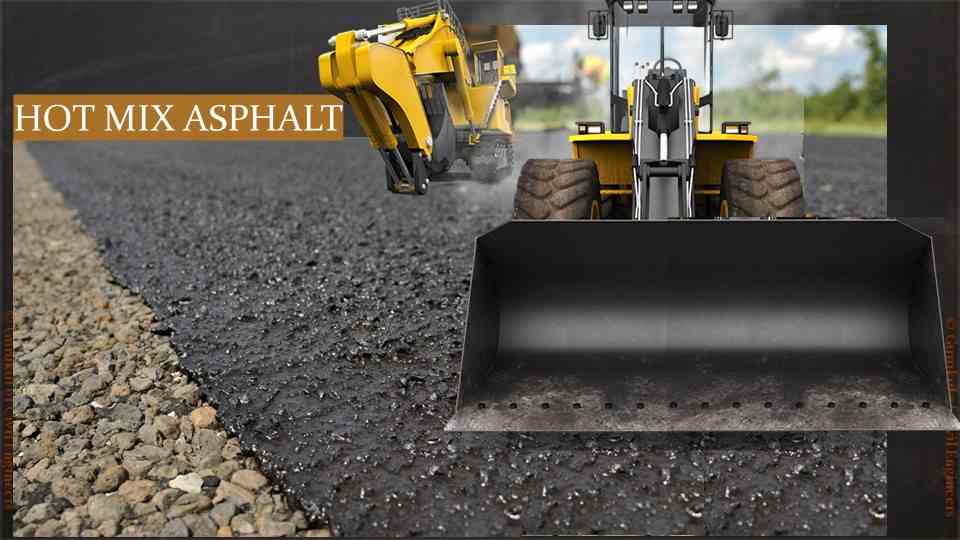Experience the Difference: Hot Mix Asphalt Paving for Regrading Projects
Experience the Difference: Hot Mix Asphalt Paving for Regrading Projects
Blog Article
Opening the Keys of Warm Mix Asphalt Technology
Checking out the depths of warm mix asphalt innovation uncovers a globe where meticulous procedures and exact formulations merge to shape our roadways and facilities. The fusion of aggregates, fillers, and binders isn't just a building job however a strategic orchestration of longevity and effectiveness.
Importance of Warm Mix Asphalt
Hot Mix Asphalt plays a vital role in modern-day infrastructure growth due to its longevity and cost-effectiveness. As the most frequently made use of leading material for roads, freeways, and parking area, Hot Mix Asphalt uses a series of benefits that add to its importance in building tasks. One key advantage is its capacity to withstand heavy website traffic lots and severe weather, providing a dependable and resilient surface area for transport networks. Additionally, Hot Mix Asphalt is economical in both first building and construction and long-term maintenance, making it a favored option for lots of framework tasks.
The toughness of Hot Mix Asphalt stems from its make-up, which consists of aggregates, binder, and filler products that are thoroughly picked and blended to meet details performance needs. Generally, the importance of Warm Mix Asphalt in infrastructure growth can not be downplayed, as it proceeds to be a foundation of modern-day building techniques.
Parts of Asphalt Mixes
The composition of asphalt mixes is composed of thoroughly picked aggregates, binder, and filler products that are essential for attaining particular efficiency requirements. Aggregates are the key component of asphalt blends, giving strength and security. These accumulations can be natural, such as crushed rock or smashed stone, or synthetic, like recycled products from old sidewalks. The binder, usually asphalt or asphalt cement, holds the aggregates with each other and gives flexibility and toughness to the mix. The selection of the binder is important as it directly affects the mix's performance in different weather. Fillers, such as hydrated lime or Portland cement, are utilized to boost the mix's workability and aging resistance. Angled Parking.
The mix and percentage of these components play a significant role in identifying the quality and performance of the asphalt mix. Engineers carefully develop the mix to meet particular requirements, considering factors like traffic volume, environment problems, and sidewalk life expectancy. Appropriate choice and balancing of aggregates, binder, and fillers are essential for creating sturdy, durable asphalt sidewalks.
Combining and Production Techniques
As soon as the accumulations are picked, the binder, frequently asphalt cement, is contributed to bind the products with each other. The binder's top quality and amount significantly impact the mix's strength, resistance, and flexibility to environmental factors. In addition, fillers like moisturized lime or Rose city cement may be included to boost certain attributes of the asphalt mix, such as its workability or wetness resistance.
During manufacturing, the accumulations and binder are heated, generally in between 250-325 ° F(121-163 ° C ), to promote blending and guarantee proper layer of the accumulations. The mixing procedure needs to Extra resources be extensive to achieve an uniform blend that promotes the wanted efficiency qualities of the asphalt. Numerous methods, visit this site such as batch blending or drum mixing, are used to accomplish consistent and top notch asphalt blends for construction tasks.
Elements Affecting Asphalt Efficiency
Factors affecting asphalt performance include a range of variables that affect the resilience, long life, and general high quality of asphalt sidewalks. One crucial factor is the high quality of products used in the asphalt mix. The kind and resource of aggregates, the binder top quality, and the additives all play a considerable role in figuring out the efficiency of the asphalt pavement. The gradation of accumulations is essential as it influences the mix's security, resistance, and workability to fracturing and rutting.

Ecological conditions additionally influence asphalt performance. Temperature level variations, wetness seepage, and traffic lots can all impact the structural honesty of the pavement. Style factors to consider, such as pavement thickness and water drainage, are important in making sure the long-term performance of the asphalt sidewalk. web By meticulously considering these aspects, service providers and engineers can optimize asphalt performance and improve the life span of sidewalks.
Sustainable Practices in Asphalt Technology

WMA enables for the manufacturing and placement of asphalt blends at reduced temperatures compared to typical hot-mix asphalt, resulting in decreased power consumption and greenhouse gas discharges. The usage of permeable asphalt mixes can assist minimize stormwater runoff problems by permitting water to infiltrate with the sidewalk and right into the ground, promoting natural water purification and recharge processes.
Final Thought
To conclude, hot mix asphalt technology plays a vital duty in modern-day framework growth as a result of its resilience and cost-effectiveness. By thoroughly balancing elements, utilizing appropriate mixing techniques, and thinking about different elements, engineers can create top quality asphalt mixes that withstand rush hour lots and rough climate problems. Accepting sustainable practices, such as using recycled products and warm-mix modern technologies, even more enhances the environmental kindness of asphalt modern technology.
Blending and manufacturing methods in warm mix asphalt technology involve the specific mix and processing of aggregates, binder, and fillers to develop a high-performance and resilient asphalt mix.Factors affecting asphalt performance encompass an array of variables that affect the resilience, longevity, and total high quality of asphalt sidewalks. Sustainable practices in asphalt modern technology encompass numerous efforts aimed at minimizing the environmental influence of asphalt production and paving procedures. By integrating redeemed asphalt pavement (RAP) and recycled asphalt tiles (RAS) into brand-new asphalt blends, the market can significantly minimize the consumption of raw products and energy, while likewise decreasing garbage dump waste.
WMA permits for the production and positioning of asphalt mixes at lower temperature levels compared to typical hot-mix asphalt, resulting in decreased power intake and greenhouse gas discharges.
Report this page